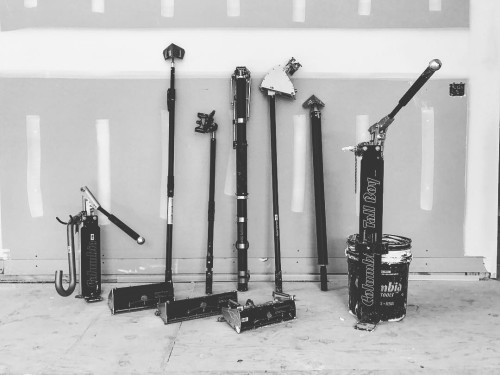If you’re considering investing in some new high quality drywall equipment, Columbia Taping Tools should be one of the first brands you turn to.
Every product made by the team at Columbia is built to the highest possible standard – no exceptions. They guarantee this quality on all their products based on the materials that go into every single tool they make.
Other companies might try to cut corners and save money by sourcing their materials from more affordable locations, but Columbia are proud to manufacture all their drywall taping tools in Canada using only the very best American steel, aluminium, rubber and plastic.
When you use drywall taping tools made by Columbia on site, you’ll instantly recognise their exceptional build quality and durability compared to other taping tools on the market. These tools are built to work as hard as you do, and last for years rather than months.
This unique approach to taping tools comes from Columbia’s founder, Bernie St James. Bernie ran his own business as a drywall taper for many years, but wasn’t satisfied with the quality of the tools available on the market. They would often be made cheaply, with little attention paid to detail or actual on-site performance – and that’s when he started Columbia Taping Tools all the way back in 1979.
Using his own high standards as a benchmark, Bernie was able to develop a complete range of drywall taping tools that focused around exceptional craftsmanship and reliability. All of Columbia’s products are built using these principles of real-world experience and a passion for good, honest hard work.
When you buy anything from our range of Columbia Tools, not only will you get a top quality product, you’ll be benefitting from over 35 years of industry experience and get to use some of the most innovative tools available on the market. The outstanding build quality is obvious on all Columbia tools, and they take great pride in manufacturing products that their customers love from the very first use.
Not only that, all Columbia drywall taping tools are backed by one of the best product guarantees in the world. Have an issue with a Columbia tool? Regardless of whether it’s a Predator automatic taper, an extension handle, a flat box or any other product, simply get in touch with us and we’ll do everything we can (with Columbia’s help!) to get you back to work.
This fantastic guarantee covers a full five-year period, so you can purchase your taping tools safe in the knowledge that they will be repaired or replaced in the unlikely event something does go wrong.
Here at Gypsumtools, we’re delighted to be working in collaboration with Columbia Drywall Taping Tools and offering their fantastic product range on our website, over the phone, or at our trade counter in Leicester – where you can touch and feel it before you make your purchase. We have absolute confidence in their range of tools and we would highly recommend them to any drywall professional.
If you want to enjoy the privilege of using some of the best drywall tools on the market, take a look at our full Columbia product range.
Find out how you can make huge savings on our taping tools with our Taping Tool Kit Builder, featuring DeWalt and Level 5 taping tools.


